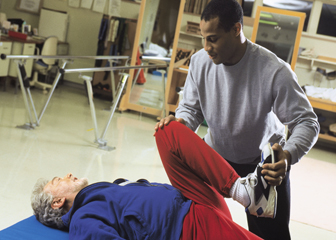Summary
Please enable javascript to play this video.
| Quick Facts: Physical Therapist Assistants and Aides | |
|---|---|
|
$58,740 per year
$28.24 per hour |
|
| See How to Become One | |
| None | |
| See How to Become One | |
| 145,100 | |
| 19% (Much faster than average) | |
| 27,600 | |
What Physical Therapist Assistants and Aides Do
Physical therapist assistants and aides are supervised by physical therapists to help patients regain movement and manage pain after injuries and illnesses.
Work Environment
Most physical therapist assistants and aides work in physical therapists’ offices or in hospitals. They are frequently on their feet as they set up equipment and help care for patients.
How to Become a Physical Therapist Assistant or Aide
Physical therapist assistants entering the occupation typically need an associate’s degree from an accredited program and a license or certification. Physical therapist aides usually need a high school diploma or equivalent and on-the-job training.
Pay
The median annual wage for physical therapist aides was $33,520 in May 2023.
The median annual wage for physical therapist assistants was $64,080 in May 2023.
Job Outlook
Overall employment of physical therapist assistants and aides is projected to grow 19 percent from 2022 to 2032, much faster than the average for all occupations.
About 24,300 openings for physical therapist assistants and aides are projected each year, on average, over the decade. Many of those openings are expected to result from the need to replace workers who transfer to different occupations or exit the labor force, such as to retire.
State & Area Data
Explore resources for employment and wages by state and area for physical therapist assistants and aides.
Similar Occupations
Compare the job duties, education, job growth, and pay of physical therapist assistants and aides with similar occupations.
More Information, Including Links to O*NET
Learn more about physical therapist assistants and aides by visiting additional resources, including O*NET, a source on key characteristics of workers and occupations.
 United States Department of Labor
United States Department of Labor









